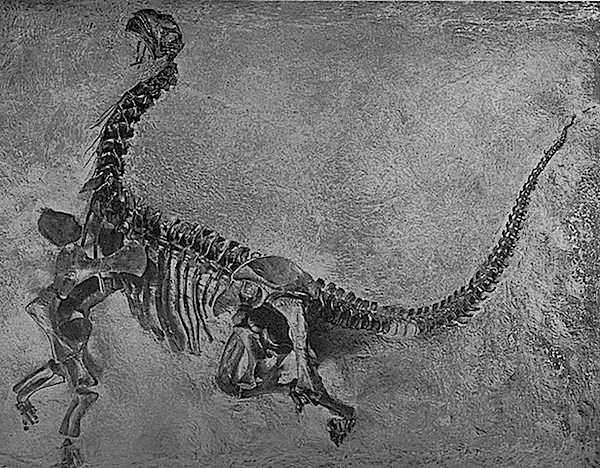
| The famous juvenile Caramarasaurus lentus displayed at the Carnegie Museum of Natural History (CM 11338) was preserved in a death pose, with a progressive twist to the axial skeleton. Its pose has been misinterpreted as evidence of that Camarasaurus held its head high, in a swan-like or giraffe-like manner. |  |
| The following shows a digital model of C. lentus to the death pose. This was created in conjunction with media for the Carnegie Museum of Natural History's "Dinosaurs in their Time" permanent exhibition. | 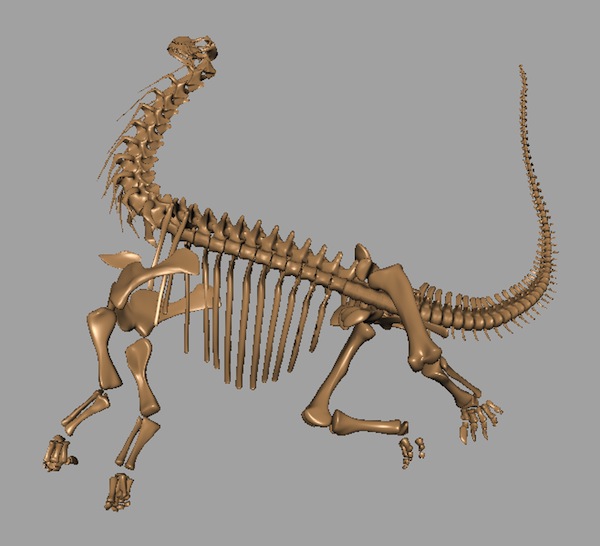 |
| The red elements correspond to those that were not preserved in CM 11338. With digital models of the individual bones placed in 3D to correspond to the original, it was then possible to animate it in the process of ressurection to a living pose. | 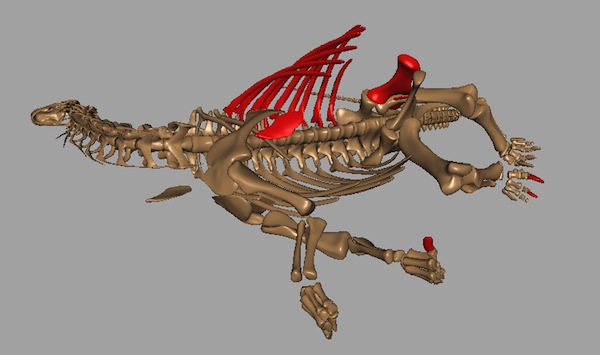 |
| With the juvenile standing again, the forelimbs and pectoral girdle creat a slight upward slope to the back at the shoulders. This, in conjunction with a straight cervico-dorsal vertebral series (i.e., the vertebrae have with no osteological wedge or keystone shape to create an intrinsic giraffe-like or bird-like elevation to the base of the neck). | 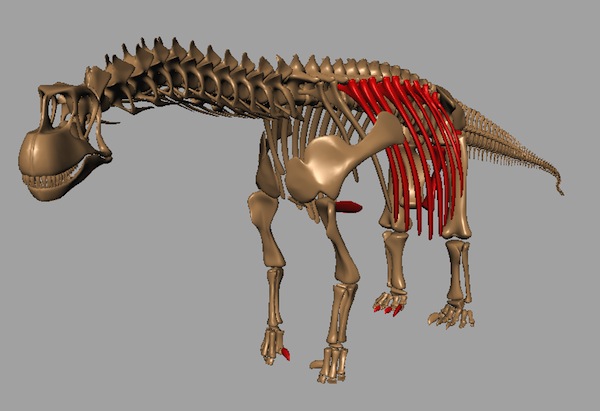 |
| The overall body plan of Camarasaurus lentus is well suited to medium to high browsing with a neck that is just long enough to reach the ground to drink, and sufficeint vertical reach to forage 5 or more meters above ground level (depending on the size of the individual). | 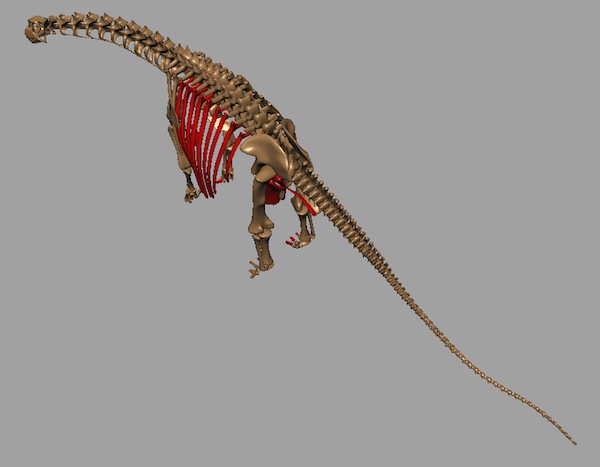 |
The following images (courtesy J. Michael Parrish) show details of the original specimen. The caudal cervical vertebrae (those at the base of the neck) are dorsiflexed in this death pose to the point that their zygaphophyses no longer overlap. The upward bend of the neck is beyond the range of motion that would have been achievable in life.
Place the cursor over the scrolling images to momentarily stop the scrolling.
|
Copyright © 2011 Kent A. Stevens, University of Oregon